Black & White

| a game by | Electronic Arts |
| Platform: | PC |
| Editor Rating: | 7/10, based on 1 review, 9 reviews are shown |
| User Rating: | 8.8/10 - 8 votes |
| Rate this game: | |
| See also: | God Games, Black & White Series |
No doubt the big question on your mind is: "Why are we doing yet another preview of Black & White?" Fear not. This is not a hype thing and this is not a page-filler. We're doing this because if all goes to plan, this time next month you'll be reading the exclusive Black & White review. So, in anticipation of this long-awaited event we thought we'd let you know exactly how things are shaping up at the moment.
At Lionhead's Guildford HQ there's a palpable sense of urgency and a hint of nervousness. The Molyneux collective are preoccupied with alpha versions, beta versions and god knows what other versions. In short - it's frantic.
"It's totally and completely my life's work; it's the hardest thing I've ever done," groans Molyneux as he grapples with yet another surreal bug on the long journey to completion. On this occasion a giant upright cow, a rotund ape and a perplexed lion - instead of looking straight ahead towards the player -are all being distracted by something happening in the distance behind them. The AI has evolved so much that it's almost as if the creatures are the star actors (the ape could easily pass for Gerard Depardieu) and they're bored. They've been filming for so long they just want it over and done with. Well, we can understand that. The entire world, it seems, wants this game finished, but not only that, we've been conditioned to expect so much it's almost as if we're destined to be disappointed.
Molyneux is understandably apprehensive. "When you look on the fan sites there are people saying things like 'Wow, I can't wait to get Black & White! I want to get a leaf and I want to turn it into a tree creature and I want it to rampage around the world...' I mean, how can we ever possibly live up to that?"
The problem is that for one reason or another the gaming public has been led to believe that this is a game that really will allow them to do whatever they like. Obviously you can't - it's only a game, you have to play within certain parameters and it's something Molyneux wants people to understand. "It was a bold claim to say you can do whatever you like. What I should say is that you can do whatever the interface allows you to do. There are things that come up every single day that have never been anticipated before. Things like, what happens when build a ring of rocks and put some people inside? Will they starve to death? Will my creature try and help them out? Yes, he will because he's compassionate. There are things like that which are just insanely complex."
Rumours
There are now around 150 Black & White Websites on the Internet and that's bound to generate hype. Rumours of what the game will hold for the player range from the bizarre to the ridiculous.
The latest rumour is that the villagers will be named after the names in your email address book. Oddly enough this is actually true. Other predictions, such as the rampaging tree monster, are mere figments of severely overactive imaginations. But when it comes to the crunch, Molyneux knows there's only one thing that really matters. "To be quite honest with you my absolute fear is that there's going to be some gameplay flaw in there that totally invalidates it. That is a real fear of mine because as it's such a complex environment, the opportunities and strategies are absolutely infinite."
In reality, the chances are the gameplay will be absolutely spot on - after all, it's been a trademark feature of Molyneux's games for the last 15 years or so. And besides, this is the man who said that play testing was one of the most important aspects of the entire development process, so surely the testers will be able to pinpoint any real gameplay balance problems. Won't they?
"I guess so. It's just that there are still a lot of things in the game that are relatively untested - like the football in the multiplayer game. We now have a complete football simulation in there, and the village that wins the football gets this big belief bonus. Well, my village was playing a match and they kept losing no matter what, and I couldn't work out what was going on. But what was happening was Andy (one of the Lionhead programmers) saw this match and just threw a couple of rocks in there to make sure my side lost. If your people lose they don't believe in you so much."
Well, Peter Molyneux has never lost yet when it comes to game development, and it would be surprising if he started now. If the play testers do their job and those damn creatures start behaving themselves, we'll hopefully get a little shiny disc that can truly be classed as 21st century entertainment. Fingers crossed for next month then...
A Dream Come True
During a recent jolly to Electronic Arts' San Francisco offices we were lucky enough to bump into Molyneux and grab a world-exclusive first play of Black & White, and frankly it was more fun than we could have possibly imagined.
Moving around the world is simplicity itself. You either doubleclick the left mouse button on a certain point on the landscape to instantly zoom to that position, or you drag yourself there by holding the left mouse button and moving the mouse. The right mouse button allows you to pick up and drop objects/people - even jet-lagged morons like us could manage it.
We smashed up houses by throwing rocks into them; we dropped little people off large mountains; and we tied our giant ape to a tree and force-fed him villagers while tickling his nether parts. Essentially we pissed about as much as we possibly could until after 20 minutes of play we were manhandled off the PC and sent packing by a flustered PR person, but it was too late - we were well and truly hooked. The overwhelming joy of being let loose in this enormous virtual playground, where you can do almost anything you want, was too much. We want it all, and we want it now.
Download Black & White

System requirements:
- PC compatible
- Operating systems: Windows 10/Windows 8/Windows 7/2000/Vista/WinXP
Game Reviews
Any fears you may have had about Black & White not fulfilling expectations can be dispelled. After three long years of waiting, Peter Molyneux and Lionhead Studios have unleashed the most original game ever devised for the PC.
If you've followed the progress of Lionhead's debut offering through our diaries and endless previews, you should already know a fair bit about the game. So, in this review we'll get to the point and concentrate on the things you don't know. We won't, for example, dwell too much on the graphics. Sure, they're totally breathtaking at times, but we've covered all that before. The creature is another subject we've used up many a word on, so while we will talk further about this integral part of the game later in the review, we won't get too bogged down by repetition.
Help Me, I'm Drowning!
So, just what the hell is going on in Black & Whiter? Well, to put it mildly, there's a shed-load going on. We defy anybody not to be overwhelmed the first time they sit down and play it, simply because of the amount of information coming at you. This game takes time and patience.
If you aren't blessed with these handy attributes you may want to go and find some - quickly. There is so much to learn you can't help but slow yourself down and attempt to absorb things one step at a time. Taking on too much too soon will only confuse and irritate you, so unless you want your brain to dribble out your nose, keep it simple at first. When you start nearing the end of the second land, things start to click into place. But only in land three can you really start playing properly without worrying about whether you're doing something the best way.
So, like chess, astVis not the easiest game to master yet, interestingly, the basic concept behind the game is totally straightforward. The game can be played in three different ways. The main mode is the story mode, the second is the skirmish mode and the third is the multiplayer. In all these modes you assume the role of a god, but the story mode is where the real action is.
With your trusty pet creature in tow, you must 'impress' your way through five different lands, collecting loyal worshippers and defeating other gods along the way. Ultimately, your aim is to be the last divinity remaining so that you can bring your own brand of good or evil to the world of Eden.
The whole 'worshippers equals power' thing is a theme that Molyneux has always gone for, so comparisons with Populous are inevitable. The considerable resource management in the village expansion section is reminiscent of Age Of Empires and numerous other resource-based real-time strategy outings along those lines.
However, if there is one particular game RStVresembles more than any other it's Legend Of Zelda: Ocarina Of Time on the Nintendo 64. The ability to play through B&W your own speed and in your own direction is unashamedly based on the non-linear fashioning of that classic console adventure.
Like Zelda, the story mode of B&W's quest-based (the skirmish mode and multiplayer mode remain pure RTS), containing more than 400 missions (or challenges) and a total of 60,000 words of dialogue. Thankfully, you don't have to attempt anywhere near that amount to complete the game - you simply pick and choose which challenges you want to embark on.
In the first challenge, a villager is lost in some nearby woods and needs to be found. This quest alone has a total of 20 different endings (or 'scripts', if you prefer) ranging from plucking the distraught fellow from the heart of the forest and dropping him into the arms of his loved ones, to horribly murdering him and his family. You don't have to tackle these moral dilemmas by yourself though; a good conscience and an evil conscience are always on hand to offer you their own particular thoughts on any situation that may arise. And it's not just in the quests where this open-ended philosophy prevails.
Virtually every part of the game allows the player to do pretty much whatever they want. Lionhead's ultimate goal was to produce a giant sandpit in which the player could mess around with everything in it. If you want to drop a cow on someone, go ahead. If you want to stoke up an almighty forest fire, then let rip. If you want to chuck people off cliffs or feed them to your creature, then go for your life. What we have here is happy hour multiplied by a thousand.
There are obvious physical boundaries to all this, like you can't move mountains or chop someone into precisely 14 pieces. But B&Wpossesses a supreme physics engine that allows for an incredible amount of freedom and scope for wanton mischief.
Yet, it's this very freedom that could conceivably be the game's most brittle area. One worry is that someone will chance upon a bizarre combination of events that totally ruins the finely-tuned balance of play. Hopefully, that won't happen, but with the sheer amount of possibilities available, the chances are higher in B&W than they would be in other less-developed games.
About Turn
But what of the interface? In a game with this much interaction the control method has to be spot on, and thankfully there are no real problems in this department. The mouse is used for almost everything, with the left button controlling your movement and the right button responsible for actions such as picking up and dropping objects. If, for some reason, you can't get to grips with it, then simply hit F2 to be whisked to a dunces' area, known as God's Playground, where you can undergo a rigorous tutorial.
At this point it's also worth mentioning what an important part sound plays in the gaming interface. Your creature and followers are constantly talking (or growling) to you to let you know what they require. For example, you may hear a villager shout: "We want babies!" And it's fairly clear what their current need is. Likewise, when your creature starts clutching his stomach and groaning, it's pretty obvious he's got some kind of problem. Music also plays an important role and the tempo of the background tune will change depending on your alignment.
Another useful addition to the interface are the camera bookmarks. These handy waypoints mean you can assign certain areas of the map to hot keys and move straight there without having to manually navigate large sections of the landscape. Admittedly, before we knew about these magical keys we were getting mildly irritated by the amount of scrolling involved. So, bookmark as often as possible - it makes life a lot easier.
A highly recommended way to maximise your knowledge of the interface is to read the many signposts scattered around the landscape. Once read, the information will be transferred to your citadel where you can re-read it at your leisure.
But there's much more to a citadel than signpost information. The way these imperious symbols of power look in the world is a direct indication of the kind of god you are - they are individually tuned to suit your alignment. They also serve as your home, and within them you can load/save games, view the current state of play, give your creature a safe place to rest, and examine a tactical map of the land. The true masterpiece of the interface is the now famous Gesture Recognition Technology, the amazing new method of spell casting where you use the mouse to trace a particular shape. Incredibly, it works without a hitch; the images have been kept basic, and you don't even have to be that precise when you draw them. But what's particularly fascinating and fair about this system is the way the enemy computer AI uses it, too. Just before an enemy creature casts a spell you can see them gesturing in the air with their hand. After a bit of time you can work out exactly what spell is coming and take appropriate action.
It truly is an amazing system, and one we're bound to see a lot more of in the future. Oh, and in case you're the owner of an extremely dodgy mouse, you'll be pleased to know that you can always revert to the old-fashioned method of clicking the spell icon on your citadel. Like we already said, B&W believes in freedom of choice. In total there are 14 different spell types, ranging from basic defensive and offensive stuff like shields and lightning bolts, through to more curious spells such as releasing flocks of birds or packs of wolves. There are also extra spells that can be used on creatures, including the itch, strengthen, weaken or invisibility.
And if the number of magical treats at your disposal isn't enough for you, check this out: all spells can be powered up by building Wonders. Each time you erect one of these magnificent structures your village becomes more powerful and your spell level increases by one. Interestingly, there's no limit to the number of levels you can power up. So, with enough Wonders, you'll eventually be able to conjure up the kind of fireball that would toast a nation.
There is a catch though -Wonders take an extraordinarily long time to build, so if you want to be that powerful you need to put some serious hours in. There are those who will, of course, dedicate their life to such an apocalyptic mission, and good luck to them.
Why You Little...!?
And now we move on to the real stars - we're talking creatures, of course. At the start of the game you can select whether your little fiend should be a cow, ape or tiger. At first, these moronic lumps of flesh are nothing more than walking disaster areas. You have absolutely no direct control over them, and they can barely control themselves, either. They lack intelligence, manners and hygiene. We were unfortunate enough to choose a tiger that quickly acquired a taste for eating rocks and his own faeces. Stick a leash around your creature's neck though, and you can slowly slap them into shape... It you're an evil god and spend your time doing nasty things, your creature will do the same. If you're a good god and spend your time helping people, your little protege follows suit.
Creatures also learn spells after you've cast them a certain amount of times. So a god who concentrates on aggressive spells such as fireballs, lightning and storms is likely to produce a completely different animal to a god who tends to be defensive and concentrates on expanding their territory by using water, wood and food spells. Again, the sheer diversity of development is truly astounding if it means sending your creature in to breakdance on their football pitch, you have to get these guys interested in you otherwise you'll get absolutely nowhere.
After conquering a village you need to increase the population by building more homes. This is achieved by building a workshop to supply the scaffolding for your new structures. Mastering this resource-management phase of the game is frankly not the easiest thing in the world to do. For some reason, expansion seems fairly slow. Whether this is down to our own failings as RTS players or a slight imbalance within the game, we're not entirely sure. Still, it is worth putting some practice in so that you know exactly how to make the most of your food and wood resources.
What's hard to appreciate without playing the game is just how real the world of Eden feels. Despite the fact that you are a floating entity, you always get the impression there is a very real world going on down below. Lives really matter - every villager is important, from the woodcutters and the farmers, through to the lucky ones who have been assigned a lifetime of breeding.
This is helped immensely by the graphics. Each landscape is beautifully designed and contains a multitude of visual treats. There are waterfalls, beaches, lakes and more, and a fully working weather system delivers rain and even snow. The spell effects are great, too; the storm is particularly eye- catching, especially when a twister starts ripping rocks and trees out of the ground and hurling them through the air.
Zooming in close to the villagers is not so graphically inspiring though. While the detail on a person's clothing and general appearance makes it immediately obvious which of the nine tribes they belong to. the mad psycho eyes and thick stumpy limbs are not so pleasing. It's a small shortcoming though, and one that certainly doesn't detract from the overall brilliance of the game.
King Of The World
Another admirable trait of B&W is its humour and references to films and modern pop culture in general. Look out, in particular, for an excellent parody of a certain Titanic scene. Even the consciences are caricatures.
The good one is supposed to be a kind old English gentleman, whereas the evil conscience is based on a New York cabbie. Make of that what you will.
A lot of the technology used in B&W is so subtle most people won't even notice. But it's details like the real-time lip-synching on the consciences that make you realise how much care has been lavished on the game. Even the logo on the splash screen when booting up the game morphs into your own personal insignia.
You simply have to respect a game that throws in so many new and original ideas. The spell gesturing, for example, could have gone horribly wrong, the creature AI could have been a disaster, but these brave developers went ahead and did it anyway. It's this kind of attitude that makes a cynical old hack consider the hitherto implausible possibility that maybe the best really is yet to come. And that's probably a good thing.
There really is nothing that approaches the ideas or standards that this game sets. Giants: Citizen Kabuto is probably the closest in terms of scale and the freedom to explore your surroundings, but compared to Weven that seems limited and uneventful. Overall. B&W is as captivating as it is ingenious. Buy it right now, or miss out on one of the most significant moments in PC gaming history.
Animal House
Monster munch, assorted flavours
At the start of the game you can choose from just three creatures. But don't worry - as you venture further into the mysterious land of Eden you will come across a whole menagerie of animals that you can transfer your existing creature's personality to. Eventually, this means you can experience the pleasure of watching the distinctive characteristics and movement of bears, turtles, lions, wolves, sheep and more.
What Is The Point?
Your chance to take the weather - and your mates - with you
As in real-life, you can never predict what Mother Nature will do next. One of the game's more wacky features is the ability to log on to a weather website and download your local weather, which is then loaded Into B&W. OK, so there's no real point to this, but let's face it -It's another touch of genius that helps create the unique aura that the game exudes.
You may also be interested to know that another of B&Ws more obscure features is the way that all your villagers are named after the people in your Microsoft Outlook address book. You can turn this option on and off at your discretion, but we suggest you keep it on because it's just downright freaky to see a village populated by your work colleagues, friends and family.
It's especially spooky when one of your villagers is called Paul Presley and he keeps wandering aimlessly from one job to another...
Multiplayer
A taster of things to come
We'll go into the multiplayer game in more detail once the servers are up and running, but for now here's a brief idea of the format Essentially, the multiplayer section of B&Wls a fairly straightforward RTS experience with up to eight players battling for supremacy of one land. It can be played over a LAN or the Internet and will contain a variety of game types. The co-op mode with one person controlling the resource management and another controlling the creature is probably the real highlight, but that's not to say the other numerous modes won't be just as chaotically enjoyable.
Remember as well that your creature is fully portable from the single-player environments to the multiplayer games, which should add a whole new angle to the proceedings...
Look for a specific online review in the next couple of months to find out more.
The Black & White stand pulled massive crowds throughout the whole show and the most cursory of glances at the huge screen displaying the game was enough to explain why. Mind-blowing graphics married to initially simplistic yet ultimately deep and engrossing gameplay are the hallmarks of a title that is sure to prove ground-breaking upon its release. The simple premise of two rival gods battling for supremacy over a huge landscape has never been so perfectly realised, with players taking control of their own populace and creatures effortlessly, as they grow their empires slowly but surely in an effort to wipe out their opponent. Black & White also sports the most unique magic system we have ever seen. Players use the mouse to draw symbols which determine the power and range of their spells, and the option to play as a good or evil god means the possibilities for open-ended and varied gameplay are endless.
Lionhead, unlike many of its industry counterparts, is promising a very strong single-player experience, but it's in its online incarnation that Black & White will really shine. Players can take their creatures online to fight against people from all over the world in The Gathering (Black & White's online community).
In an effort to draw in as many gamers as possible, Lionhead has devised what is surely the most impressive and intuitive interface we've seen to date. There are no endless banks of icons cluttering the screen and all game actions can be performed with the mouse. This will surely make even the most casual of gamers feel at home straight away.
Perhaps the most impressive thing of all though, is the A1 of non-player characters. Leave your villagers to their own devices and they will get up to all kinds of mischief. Watch in amazement as they marvel at new creatures they find on the landscape, and even learn how to play football to amuse themselves when you haven't given them anything to do.
We are a bit impressed by this game, can you tell? If there was one game at E3 we couldn't wait to get our hands on, this was most definitely it. Look out for a major feature in Online next month, which will investigate Black & White's peerless online capabilities in depth.
In Lionhead's first game, the eagerly awaited Black & While, you play a god. From atop your Olympian throne, the aim is to guide your people and spread the word of your being, either by using the stick or the carrot, or a combination of both. You can be good or evil, but being right and wrong has nothing to do with morality, only competence. The more your subjects worship you, whether they are forced to, or do so by their own volition, the greater your power is to enact your will. What is a god without belief after all? But there's much more to Black & White than healing the sick and uprooting trees. Much more.
To help and, in some cases, hinder you, you'll find and nurture a familiar - an earthly form to your ethereal - which is a Pegasus to your Zeus. These creatures-from cows and lions to gorillas-act out your will in accordance with their own and though they will do your bidding, they need constant attention to keep to the right - or wrong - path.
But you knew all that already. We've been harping on about Black & White for more than two years and although you know about the spells, the creatures and the gorgeous graphics, you may not be aware just how all this will translate online, how such a hybrid of genres - from role-playing to . real-time strategy - can work in an online world where up until now genres have remained aggravatingly static.
Two Become One
Far from just a simple case of logging on, choosing a god, a creature and a map, Black & White's online features are built around the single-player game.
You may find the concept odd, but the aim is for you to be able to take your persona from the singleplayer game to the multiplayer, and after you've beefed up your creature and yourself, you can bring what you've learnt in terms of tangible skills back into the single-player campaign.
"Whether you are online or off, your creature and your player personality is continual and ongoing," says Lionhead's founder Peter Molyneux. "That means your creature and your profile is a true reflection of everything you've done in Black & White. Normally you go into an online game such as Quake, fight a bit, come out and that's it. In Black & White, you fight online and your creature gets a bit better. He learns things that you can take back into the single-player game."
The watchword here is persistence. However, while pure online games have no trouble with the concept of continuity, trying to merge what are effectively two separate worlds - the online and the single-player -has opened a whole can of worms at Lionhead. Although, there's an important distinction between persistent worlds and persistent characters.
"Obviously it's been a nightmare to get right because, if we look at a nightmare scenario, a player can start the game, get a baby creature and after 15 minutes say 'sod this' and then go online.
He goes online for two weeks, builds up his creature then goes back into the single-player game after having only done 15 minutes of the story with this mammoth creature. You can imagine that balancing all the things that happen in the single-player game with this in mind has not been, well, a trivial task."
Gather Round
There are essentially two sides to Black & White's online facilities, both of which, as previously mentioned, will draw on the single-player game. However, one, called The Gathering, as well as being incorporated into the final release, will also be released as a free standalone game and as such will not draw upon Black & White's offline campaign. Confused? Don't be. Peter explains.
"When you join The Gathering you'll be asked a few simple questions and you'll be given a creature. You'll be able to do all the things that people who own Black & White can do, but when you leave The Gathering you lose that creature. It's a bit shameless I know, but hopefully that will hook people into buying the full game." (We shall be cover mounting The Gathering exclusively on a future PC ZONE cover disk. Shameless, we know, but hopefully it will hook people into buying the magazine.)
While the main draw of Black & White is a battle between the gods and their creatures over terrain we are all familiar with, The Gathering is an off-world place where the creatures congregate with a view to enhancing their abilities.
"At any time while playing the single-player game you may want to take your creature out of the story you are currently playing and meet other people's creatures to fight with them, trade skills, chat with them and learn moves. For example, if you had a creature and I had a creature and you had a sequence of special fighting moves, I could say, 'show us your moves' and my creature could learn just by watching. Very cool, especially when you could take that creature from the online world back into the single-player game - if, of course, you own it. Another cool thing is that the creature hasn't got any limits to his learning, so some creatures will learn some incredible things by what people teach them. You can still use your godly powers to do things, it's just that you do things specifically to other player's creatures. The important difference between The Gathering and Black & White Worlds is that you don't actually own any territory or control any of your subjects, there is no concept of it."
World Of Support
Black & White Worlds is the meat on the bone of Black & White's online game. Again, the plan is that you can take your characters from offline to on and vice versa, but unlike The Gathering, Black & White Worlds takes place over the deserts, woods, mountains and wastelands of the main game.
"The idea is that, as with the single-player game, you are a god, you've got a creature and you just want to battle other gods," says Peter. "There'll be a server with a number of worlds set up with a match-making system which, rather like Diablo and Quake, allows you to just go out there and fight it out.
Each god will have its own citadel. As Peter explains: "It's more a case of last man standing, where every person's citadel is effectively a flag and when you capture all the citadels you win." Co-operative play will, of course, feature heavily, with players able to set up clans and band together to thwart the plans of other gods. And for all of us tight UK gamers, Black & White should be light on the wallet.
"In terms of cost, the financial model hasn't been fully worked out yet, but at the start it certainly won't cost anything to play Black & White online. What we might do - and we're still talking about it - is have some sort of VIP area that you can go into for a small charge, but to be honest, nothing has been set in stone," says Peter.
In terms of ongoing support for Black & White, Lionhead is looking to the long-term. Having sunk three years of blood, sweat and beers into the game, Peter Molyneux isn't prepared to see it die after six months, as is the case with so many games. In fact, on the online side of things, Black & White's future may well stretch to a brand new, online-only game.
"I think a lot of online communities need to be maintained, you need to continually refresh things and have new and different things just to make it seem fresh all the time. We're in the process of setting up a company called Black & White Ltd, the sole purpose of which is to continue to maintain the online portion of Black & White. They'll be doing some really cool stuff, for example people will eventually be able to create their own worlds. Later on in the year there will also be an add-on pack where you can buy clothes for your creature, upgrade his intelligence and keep the whole world evolving.
"There is a plan, and it's a distant plan at the moment, to produce a game called Black & White Universe, where you can have a whole world that is persistent online, where you can leave your creature in and he'll look after things when you're not around and when you do log on, you're in control. That world will change as people go in and out, but that's a lot of work and I don't see that coming out for a fair few months." Scoop!
Do The Funky Gibbon
The merging of offline and online play through The Gathering and Black & White Worlds, and the ongoing support and plans for Black & White Universe, all point to the fact that Lionhead is keen to prove that online gaming has yet to realise its full potential. But there are other features within the here-and-now version of Black & White that show Peter Molyneux still has a touch of originality within his games. "There is quite a lot of online stuff hidden in Black & White's online features. For example, you'll notice after a while your creature will develop an overwhelming urge to create his own Web page. He'll put pictures of his best friend, whether it's an off or online friend. He'll give details about himself within a file that you can put on the Web and he'll even keep it updated.
Also he'll find out what music you listen to, what the weather is like in your local area - all little tricks, none of which are hard to do. Black & White has full weather simulation built-in, so all we have to do is go to the right Website, download the right information and we can reflect the weather inside Black & White as what's outside your window, which is pretty cool. Also, if a creature is going to dance in time with the music, he shouldn't breakdance to Vivaldi's Four Seasons, it wouldn't be right. It's far better to go to a Website, download the profile of the track you're listening to and the creature selects the most appropriate dance to learn."
All this may sound a little unnecessary and to some, downright creepy, but by having your creature interact outside of the main game, you could argue that players will develop an attachment to their creatures they might not otherwise acquire. Often in games it is hard to care about the characters you control and even harder for developers to inject personality into their games. Lionhead, like the Molyneux-led Bullfrog before it, has done more to advance this aspect in gaming than any other developer. With Black & White and the Internet, they are poised to take things a significant stage further.
If Black & White is going to be Lionhead's first and last PC game developed in-house, there's no doubt it'll be a debut to rival The La's one and only album. The difference is that development on Black & White will be an ongoing process, with almost all of it occurring online. Lionhead will be turning its attentions on pastures and formats new, but that's not to say that the company's future efforts won't appear on PC at a later date via one of its satellite developers. In the meantime, Peter Molyneux will, of course, be keeping a watchful eye on things both within and without his close-knit stable of development teams "What I'm really looking forward to is some of the Japanese designers coming online. To be honest with you, the online games we currently see are going to pale into insignificance when they come on board.
What's lacking at the moment, other than the likes of Quake, is the instant gameplay hit. There are those games like EverQuest where you have to play for hours and hours to get anywhere, which are great if you've got hours and hours of time to spend, but there isn't any online game at the moment, apart from first-person shooters, where you can go online and just see what happens. It would be nice to see all sons of online games like that."
Over the past two years, Lionhead Studios have fed small, tantalising scraps to one drooling PC writer after another. Those who've crossed the threshold into the Lion's den invariably returned with tales of beautiful villages beset by hideous monsters and Tamagotchi with fangs. We were left confused - impressed and hopeful - yet confused. Ironically, just as we arrived at the conclusion that industrial espionage would be the only sensible way to get more information, it happened: an invitation down to their pad, where, once and for all, everything would be revealed. Maybe...
Why Hast Thou Forsaken Me?
Okay, first things first. Black & White is not just another god game. It's a role playing game. Sure, you play the part of a divine entity with the destiny of one of nine tribes who are putty in your omnipotent hand. And yes, there's the usual cacophony of spells, powers and nifty tricks that can be used, abused and cast into the fray. Fine. We've seen all that before. What makes Black & White so original is the manner in which you go about your godlike duties.
The loving, caring and sickeningly benevolent deity can build houses for his/her citizens to live in, ensure the land is fertile for crops and cattle, and generally make life a big shiny, happy ball of fluffiness. On the other hand you can be a total arsehole, to put it mildly. You can throw your followers into the sea, rip up their forests and slaughter their cattle. In short, Black & While lets you be the god you want to be - depending on your mood, of course. In essence, it's a kind of weird personality test.
But what of the actual gameplay? What exactly do we have to do? You, as god of your tribe, must attract followers in order to grow more powerful and defeat the other tribes of Eden. Tribes include Greeks, Japanese, Tibetans, Zulus and Aztecs. Nothing groundbreaking there, but now for the clever bit.
Unlike games such as Populous and Dungeon Keeper, there are no levels as such - just a collection of worlds that can be visited via an innovative method of'opportunities'. These are presented to you throughout the game, depending on your current good/evil alignment. For example, you may come across a hut in the middle of a forest with a small girl crying outside. A good adviser pops up on the left of the screen, and a devil appears on the right. "Help the girl!" implores Mr Good. "Bum the hut!" cries Mr Evil.
Talking to the girl reveals that her brother has hurt himself in the forest and needs help... Good: "Save the boy!" Evil: "Kill the boy!"
And thus your fate develops. Saving the boy could give you more information on the whereabouts of a new spell or ability. That in turn could give you access to a new world. Then again, killing the boy might endear you to a particular tribe who wanted him dead anyway. Said tribe will then give you alternative opportunities. You could ignore the girl altogether. As a god, such things are beneath you anyway. Like we said - RPG.
Creature Comforts
There's one huge, throbbing side effect to all your divine actions, though. At the start of the game you get to choose a creature to act as your general, to be your eyes on the ground, if you like. Your sidekick could be a tiger, lion, ape, cow or even a person. But more to the point, this 'familiar' will roam the landscape and generally do the kind of tasks it thinks you, as its master, will appreciate.
It achieves this by watching your every move and then learning. It's the ultimate case of a child mimicking adult behaviour: if you go round hurling innocent villagers off the tops of mountains, your impressionable young creature is not going to know any better, is it? It has absolutely no concept of what's right or wrong, so it will just go ahead and copy you.
From a small baby, your likeness slowly grows until ultimately it becomes a kind of enormous roaming guardian. As it matures, its appearance also changes. Good pets adopt kindly features and their skin or fur takes on a shimmering golden hew. On the flip side, if little Wolfy is shoving villagers into his mouth at every opportunity, stomping on houses and generally being a bit of a malevolent pain, he'll turn reddish, flames and smoke start seeping off his back, giant teeth appear, and hey presto - evil monster ahoy.
Appearance isn't just a good/evil thing either. If our creature's doing a lot of manual labour or fighting, muscles start to form on its body. If it's not getting enough food, it will become emaciated and pathetic looking. Anything and everything that is likely to affect your pet's development is taken into account. A completely revolutionary wounding and healing process further enhances this infinite possibility scenario.
Paul McLaughlin, Lionhead art supremo, explains the process: "The creatures bruise in a particularly nasty way when hit. They also bleed and the blood trickles down their bodies. Over time, the cuts heal but the scars remain. If you see an old creature who's been around a bit, it's immediately apparent that they've been through a lot."
Now that's what we call attention to detail, but can creatures actually lose entire limbs and still function? That would be cool...
Lionhead's founder, Peter Molyneux, explains: "We dabbled with the idea, but it started to get a bit too Monty Python really - legless creatures crawling into battle and that kind of thing... However, you may find a creature with one arm missing or something like that."
Holy Shit
At one point, Molyneux started cooing excitedly after his enormous upright tiger shifted a giant rock that was obstructing his villagers' daily routines. On the surface, this may seem like a relatively simple thing to do, but the fact that this creature made this 'conscious' decision without any input whatsoever from the player is testimony to the AI routines implemented in the game.
These routines also cover actions like eating, sleeping, dancing, smiling, grimacing and crapping. Yes, that's right - defecation. The creatures have healthy bowels - so much so that the piles of dung found pebble-dashed across the world can actually be thrown at enemies. We witnessed what can best be described as a shitfight: creatures hurling boulder-sized stools at each other until they vomited. Frankly, this made no sense whatsoever. And it wasn't meant to. When quizzed, Molyneux had this to say: "I like my games to be like playing in a sandpit. You just sit there and do or make whatever you want. I don't want set strategies, and I don't want people to feel as though they're being led down a railway track. The most important thing is that the player has the freedom to do pretty much whatever they want."
You may call it sick, twisted, even disgraceful - the fact remains it's original and it's the funniest thing we've seen on a PC screen for a long time.
Funny Old World
So those are your Tamagotchi - but what of Eden, the world they inhabit? Well, at first glance, there is a striking resemblance to Bullfrog's Populous: The Beginning. In a way, that's to be expected: Molyneux was the guy who invented the original game after all. However, closer inspection of the world reveals much more. The 3D graphics engine is a stunning affair. In true omnipresent style, you can zoom down through a building, on to a table, where a maggot emerges from inside an apple. You can then zoom out again, up into the stratosphere, and have a view of the entire world in all its glory.
Back at ground level, things are shaping up nicely. The grainy texture of the many terrains is highly authentic - trees bend in the wind, and water ripples and laps the shoreline. Even the clouds will cast shifting shadows across the ground as they move overhead. So does this mean we're going to get weather, too? "The weather effects aren't yet implemented," says McLaughlin. "We're really looking forward to that - particularly the build-up of snow on the slopes after a storm. Of course, it'll all melt away when the sun comes out, but the little people should have some fun while it lasts."
Cool. So what about night and day? McLaughlin ponders: "We've got lots of offline and real-time lighting techniques, volumetric lights and fogs, reflection mapping, environment mapping - and it all grows and morphs." Sounds almost like a "no", but again it all boils down to the Jekyll and Hyde thing. If you're evil, the sky darkens, the black clouds roll in, thunder and lightning crackles and your domain is transformed into a vision of hell. If you're good, the sky is blue, the sun shines and birds sing merrily. Which brings us on to the sound... Russell Shaw, head of sound and music, reckons it's the most ambitious project he's ever worked on. "As you move around the landscape, the music morphs between evil, neutral and good scores, as well as including the correct ethnic instrument set for each tribe." Sound effects are conjured up with unprecedented attention to detail: "The sound effects are incredibly detailed, high quality and in complete surround 3D. In total, Black & White has over 5000 individual sound effects."
Add to this the automatic lip-synced narrated help system, arranged musical scores for scripted story chapters, quests and challenges and you have what should, hopefully, be an acoustic masterpiece.
Nearly There
What we really want to know is, when's it out? The good news is that it's not long now. March, hopefully - at least that's what head of testing, 'Gestapo' Andy Robson, thinks. What about releasing it sooner and then releasing a patch to fix any bugs? "I don't agree with putting games out that are unfinished. What's the point?" groans Robson. "Why work on a patch when you could have just fixed all the problems in the first place, and then release the game a month later? I know companies have deadlines and publishers want to push the game out for Christmas or for the end of a quarter, but people have to buy these games, and why should they buy an unfinished game? It's simply not fair - we should ban patches."
We couldn't agree with you more, Andy. We'll be bringing you the review as soon as we possibly can. Until then, keep checking the Lionhead website, it's got loads more info and, apart from anything else, it's probably the best-designed site ever. If it's any indication of the effort that's been put into the game, we are about to be very spoiled indeed.
Peter Molyneux and Lionhead Studios are now claiming that Black & White, their hugely anticipated new-genre hybrid, is more of an RPG than anything else, because of the way your character develops its personality based on the way you control the game world. In some ways Black & White could be called a GRPG (God role-playing game), because of the way it mixes strategy and character development.
By manipulating the indigenous inhabitants of a green and pleasant land called Eden, you gain access to a host of spectacular spells, and can use them to progress by good means or evil. And the nature of your character, and your surroundings, develops as a result of that progression. If you tend towards using evil magic (destructive, fear-invoking spells), then your homelands physically alter in accordance with this.
To us, Black & White looks like being good, old, 'naught/ fun. But then we're all sick and depraved anyway. If you're bad and want to be good, or good and want to be bad, then Black & White is sure to let you assume that role.
Game That Changed The World
It's 4AM at the Lionhead offices and a bleary-eyed collection of artists, programmers and designers are gathered around the company's Webcam holding a large piece of cardboard. The makeshift board simply reads 'It's Finished', a statement that proclaims the completion of one of the most hyped and highly anticipated games in history to the world. The game? Black & White.
Four years earlier in 1997, Black & White was no more than an idea on a page. In fact, it was no more than one idea, that had come to gaming guru Peter Molyneux while he was stuck in a traffic jam. It was an acorn of inspiration fighting for life at a time when Peter was taking his first tentative steps towards setting up his new development company Lionhead Studios, just days after leaving the first company he'd nurtured to greatness, Bullfrog.
"Lionhead was started in July 1997," recalls Peter. "I came out of Bullfrog feeling a bit jaded. I'd lost that sense of family that Bullfrog had, something I really wanted to rediscover with Lionhead."
And so Peter, along with a handful of friends and associates, sat down one night in a pub and started discussing potential ideas for their new company's debut game. But while several of the ideas looked promising, it was god game Black & White that stood out from the crowd. Within days, development of the project began.
Back To Basics
"When we started the game, there was absolutely nothing there," explains Peter. "We had to start everything from scratch. We went to PC World and bought five machines, then built a test-bed which let us play a very primitive version of the game." From very early on, Peter and his team had a clear idea of what they wanted from Black & White. "The original idea was to make the player a powerful being who could influence people and the world. We wanted it to be a playground that you could make as beautiful or as scary as you wanted it to be. We wanted your land to be able to change from one extreme to the other," says Peter. "Most god games only allowed you to influence a couple of things, so we came up with the idea of having a physical manifestation of yourself on earth."
In the final version of the game, the physical manifestation of the player was an animal, a creature that could be nurtured from birth and moulded into the player's own image. But it wasn't always this way. "Originally we wanted to make it a giant man, a ant man, but this created some major issues when we started slapping it," remembers Peter. "It felt very emotionally disturbing. So we decided to change it into a creature."
One of the many common misconceptions about B&W was that it was a hideously delayed title, an assumption that still rankles with Peter. "Many people think that B&W was late, but when you think about it, the first line of code was written in February 1998 and the game was released in early 2001. It was three years, going from nothing and starting with a team of five people to having a finished game. It was actually done very quickly when you consider the circumstances. We announced B&W at E31998 on the back of a concept, and because we announced it so eariy, it lingered in people's minds for so long that it felt like it was delayed."
Hyper
It wasn't long after the E3 announcement that B&W fansites began to sprout like mushrooms after a downpour, a phenomenon that was to see both expectations and anticipation for the game spiral out of control. By the end of 1998, Black & White was already the subject of feverish speculation and excitement both in the press and the public.
Jonty Barnes, now head of Black & White Studios and leading the development of B&Ws sequel, recalls just how out of control expectations soared. "It was very hard for us to communicate exactly what Black & White was to the public and because of that, the hype started to get out of control."
However, it wasn't only people's expectations that were spiralling out of control, as Peter and his team soon discovered. "There was an amazing amount of hype generated for B&W," recounts Peter. "There were all of these fansites that were mooting features that weren't even planned for the game. Basically, they were making them up. One fansite would say, 'Wouldn't it be great if B&W had this or that' and the next thing we knew, another fansite was saying that it had heard that B&W was definitely going to have this feature in it. Then the next fansite would say that it had seen and played the new feature. It was out of our control. In the end, we started trying to shove features into the game that had been started by these rumours, just to try and satisfy the fans."
Raising The Bar
But hype wasn't the only obstacle the team encountered, thanks in part to the small size of the team (just 24 in total), and to the company's determination to constantly raise the bar in terms of quality, originality and technology.
Alex Evans, one of the project's 3D programmers, remembers this steely determination well. "When we first animated the creatures, we did such a good job that it raised everyone's expectations of the game. So then we decided to put in thousands of villagers. Every time we managed to do things like that we'd raise the bar further. When I'd done the weather effects, Peter decided he wanted me to get the game to connect to the Internet and reflect the local weather for each player. That kind of thing was happening all the time."
"In the end, we barely left the office in 2001, but no-one minded, because everyone really felt like they owned their part of the game. B&W felt like our baby and we all felt responsible for it. It had that combination of Peter driving it forward with wild ideas, while we came up with a great engine to do it justice." The results were visually phenomenal, a game with a living, breathing world of (at the time) unmatched beauty and detail, thanks to the utter dedication of Lionhead's staff. "Most games have a crunch period of between three and six months, but with Black & White, the crunch period was pretty much the entire length of the project," recalls Jonty. "We had to prove ourselves as this was our first project, and the great thing was that we all wanted to get success for every member of the team. It was an evolving project and we never wanted to say no to putting in any new feature we came up with. We were working crazy hours -I don't think my body could do it again."
Then one day, it all came together. "Suddenly, there was this one weekend when we could finally play a land for the first time. The game went from a game that just looked beautiful to a game we could actually play," says Jonty. "It was an amazing moment when we played it and found it actually worked. There was still loads to do, but you could see how the living, breathing world worked. It re-energised everyone and I think that weekend was the highlight of the whole game."
And Relax...
And so, after years of intense round-the-clock graft, the game was finally completed in the early hours of a winter morning, celebrated with the now infamous 'It's Finished' message broadcast over the Internet. Within minutes of the image appearing Online, the Lionhead messageboards lit up with posts from all over the world from fans who'd been waiting impatiently for this very moment. Comments such as, 'I can go to bed now that I know it's finished' were commonplace, again highlighting the feverish level of hype and expectation surrounding the game. Several months later, after it'd been tested, approved, pressed and packaged, B&W was released on the now baying public, many of whom had expected B&W to be released the day after the announcement. Copies flew off the shelves at an unprecedented speed and the press lavished the game with some of the highest review scores in history. But not everyone was happy.
As is often the case with overly-hyped products, Black & White couldn't live up to many people's unrealistic expectations. While many hardcore god gamers embraced its original approach, more casual gamers simply couldn't get to grips with it, labelling it as a beautiful but unfathomable and unclear game.
The truth was probably somewhere in-between. Undoubtedly, Black & White was a work of art, originality and creativity, triumphant in pushing technological boundaries and embracing freeform gameplay in a way never before touched upon by a game. However, this freeform nature was also an area of confusion for many players, with the world and creature often reacting in unclear and unexplained ways. This is something that the team at Black & White Studios is attempting to rectify in the sequel.
"For some people, Black & White really didn't deliver what they were expecting," explains Jonty. "We received an abundance of feedback from the game, some positive and some very negative. It wasn't a perfect game, and that's what we're addressing now."
You've Got The Brains...
If Black & White proved one thing, it was that creativity still had a very major role to play in games development. "I haven't seen any games that have tried to imitate Black & White, but I think it inspired a lot more companies to go out and innovate, even though it had its faults," says Mark Webley, production director on Black & White. "Unfortunately, just because we did something as innovative as B&W doesn't mean that publishers then turned around and allowed other smaller developers to have the same creative freedom. But I think the bigger companies have certainly been able to have more control over their work since Black & White."
Easy To Say Now, But...
Looking back, Peter is equally philosophical about the game and its influence. "The hype damaged the game and we did make mistakes with it. B&W was the first game I'd worked on that wasn't just a collection of levels. It had a story, and had to be simple enough for kids to play, yet complex enough for adults too. That worked to a certain extent, but we spent too long on the first three hours of the game, which sadly also ended up being the worst three.
"However, it was incredible how open the team was to new ideas - you wouldn't get that today. There was a feeling that we were doing something important that had never been done before. We started something with B&W - we tried to be different. I'm proud that we tried to do it, to make a game that was totally dissimilar to any other game, from the interface to the overall concept. Plus, technology-wise it did a lot of new things and I don't think B&W has, or ever will be, imitated straight off. More importantly though, I think it proved that you can make a big title without it having to be attached to a big licence."
Ultimately, Black & White proved that developers could be left to their own devices to create great, original games without the intervention of publishers. It paved the way for a greater level of autonomy for many other development houses such as Valve Software, Epic and Gearbox Software, and provided a base from which Lionhead has flourished. It may have had its faults, but its influence on the world of gaming shouldn't be underestimated.
Voices In My Head
Did Someone Call Me?
We've all heard of them, you might have even experienced them. I'm talking about easter eggs (or funny extras covertly coded into the game by its developer), which are commonplace in many games. Black & White was no exception.
Perhaps the most unsettling of these was the Spooky Voice easter egg. "We recorded the top 20 most popular names in each country with a really spooky voice," explains Alex Evans, one of the 3D programmers on the game.
"Then, if you played it really late at night, the game would search your machine for your Windows username or login name. If it matched one of these names, you'd hear it spoken in this eerie voice. People shat themselves. Within days of the game shipping, all of these comments started appearing on messageboards swearing they'd heard their name spoken in the middle of the night."
Peter Molyneux's controversial god game teaches us many things about PC games and those that play them. On one hand it proves that originality and playability can coexist, yet on the other it exemplifies how thoroughly pissed off and vocal gamers can be if a game is released unfinished and two years late.
Thankfully, these days all is forgiven. Black & White is now a fully functional sandpit of good versus evil and at just $10 it's definitely worth a pop for those who have yet to experience this seminal piece of gaming history.
As a mixture of strategy and roleplaying there really is nothing that comes close. The whole atmosphere of the game is dependent on whether you choose to rule the land of Eden as a good or evil God. And the coup de grace, the ability to train a 'pet' creature to act as your second in command, remains to this day one of the best attempts at genuine Al we have ever seen. True, there are some rather embarrassing and unique problems associated with this breakthrough (you try stopping the little sod crapping on villagers' homes once he's a got a feel for it), but if you can forgive these little nuances and concentrate on destroying all the other gods and taking over the world, you'll become hopelessly enchanted.
Like Half-Life, GTA III and Deus Ex, B&W is one of those games you simply must have. No arguments.
Overview
Black & White, the latest creation from Lionhead Studios, is an ambitious, innovative title that seeks to redefine current ideas about strategy games. You're not a powerful sorcerer or a mighty warrior, but a god who shapes the forces of good and evil at your whim. Given a follower creature of epic proportions and the ability to interact with your environment on a massive scale, you decide the fate of entire civilizations.
With game design that allows your moral behavior (good, neutral, evil) to affect the world and your place within it, Black & White offers unprecedented gameplay. As the game puts it, "Will you be a blessing, or a curse?" Not really belonging to one particular genre, Black & White has elements drawn from real-time strategy, fighting games and SimCity -style village management, while still maintaining a very original identity.
As you proceed through the adventure that waits, you'll meet many other gods, learn a host of powerful miracles and battle Nemesis, your greatest enemy, for the power of the Creeds and the secret to godhood itself. Will you save the universe or reshape it in your own image?
Gameplay, Controls, Interface
Black & White starts out with a simple introduction to godhood -- the point and click interface! Seriously, your main control is a hand, representing your divine power; it has complete freedom of movement over the face of Eden (the first land you encounter). This hand allows you to move and orient the camera, as well as pick up and throw objects in the environment. You'll be able to throw rocks, trees, sheep and the occasional villager. You can't demolish buildings with the hand, but you can toss rocks on them, removing that pesky problem. Using this hand properly is the key to advancing through the game, as you'll be solving many, many puzzles by moving stones, people or even livestock around the landscape. The only problem this style of interface presents is that sometimes it's difficult to move around the landscape.
Beyond the hand, you'll be given a creature early in the single-player game, a massive Titan imbued with your power. The Titan is a normal animal that's been turned into a giant bipedal creature, given to you purely to serve. Not only does the Titan learn and grow, he is able to use the same miracles you cast and can be taught to perform tasks. He'll start off about three times the size of a human being, and can grow tall enough to crush small buildings underfoot. His alignment changes the same way yours does, and he'll learn how to throw rocks, consume only certain foods, and harvest resources for your villagers. You've got three different leashes to control him: one allowing him to learn, another for kindness and compassion, and another to make him aggressive in whatever task he's performing.
Along with your hand and creature, you've got miracles to cast. They're performed with a simple movement of the mouse, tracing a symbol which activates the miracle. You'll be able to create miraculous food, water and wood -- even destroy a small village with fireballs if you'd like.
Progressing through the game requires solving story scrolls, which come in two flavors: gold and silver. Silver scrolls do not need to be completed to finish the storyline of the game, but rewards are provided should you choose to follow them. Gold scrolls allow you to proceed to the next chapter of the game, and usually involve a long-term task or puzzle. The best thing about the story scrolls is that they trigger the events in the game, and if you don't want to follow one you don't have to.
Far and away the most interesting feature of the game is the alignment system. Everything you do, and I mean everything, determines whether you are good or evil. Nearly every task in the game can be finished in a good way and an evil way, and different consequences await you for your decisions. Your creature also has an alignment, and as he tips towards good or evil he'll change before your eyes. A lion will become dark red, grow giant teeth, claws and a hunchback as he becomes more evil. If he starts becoming good, he'll glow golden, stand straight and tall and have a resplendent mane.
Multiplayer Support
Black & White's multiplayer support allows you to fight in a land with up to seven other gods, either as ally or enemy. Essentially reproducing the same effect as the single-player experience, playing Black & White online allows you to interact with other gods, winning over their populations to your belief or working together to defeat a common foe. The only drawback to this multiplayer feature is the poor design of the multiplayer interface. The Internet game browser is cluttered and disorganized, and the menus that allow you to connect to a game are unpolished and look half-finished.
Graphics
Using a powerful new 3D engine developed specifically for Black & White, the visuals in this game are amazing in both scale and variety. Each gameplay area is a small island inhabited by you and any other gods with whom you're playing. You can zoom around the entire island by zooming out to a bird's-eye view, and then immediately focusing on an object as small as an apple. As a good demonstration of the performance of this technology, you can find a worm poking out of an apple. Once you've zoomed up close enough to see it, you can zoom out to above the clouds, looking at the entire island like it was a postage stamp.
The quality and design of the graphics are top-notch as well, with the ability to handle the multitude of creature forms and alignments, and a noticeable difference in the villagers as they grow from child to adult. With rocks, trees, mountains, birds, fish and more, they didn't leave a lot out when designing the look for this game. While not as immersive as the graphics from a game like Rainbow Six, Black & White manages to cram all this detail into a game that can do much more.
Audio
The background music in Black & White is extremely well done, with a slight Celtic tone. Given that this game isn't strongly oriented around action, the music supports the game in areas that would otherwise be slightly boring. Even so there isn't a lot of music, and the game doesn't always provide that nice musical edge. Making up for any blemishes in the score is a feature that allows you to substitute your own music from CD or MP3. This music has an in-game effect, and your creature and villagers will even learn to dance to certain music styles.
Originality/Cool Features
The amount of thought that went into the beings that populate Black & White is immense. If your creature, god forbid (no pun intended), happens to take a liking to eating adult male villagers instead of grain, he may develop a preference, and may selectively eat only adult male villagers even if offered sheep, grain, or a young male villager. Combine that with an artificial intelligence that allows your creature to learn from example, using positive and negative reinforcement to guide its growth.
Although on a much smaller level, your villagers are equally intelligent. They're able to function as a society on their own, gather all the resources they need and continue to grow in population. The only thing they won't be able to do is build new structures, since only you control where the new buildings are made.
System Requirements
Windows 95/98/2000/ME, 350 MHz Pentium II MMX processor, 64 MB RAM, DirectX 7.0a (supplied with CD-ROM), DirectX 7.0a-compliant sound card, PCI/AGP 8 MB 3-D hardware accelerator card with Direct3D support, 600 MB free hard disk space, 4X CD-ROM drive, TCP/IP Internet connection at 56K or faster or Internet access via LAN (for multiplayer support)
Bottom Line
Black & White is a high-quality game that lives up to its hype. It has an innovative style, quality design and some elements that have never before been seen in gaming, like the alignment system. It's easily one of the most entertaining games I've played in a long time. There are only really two drawbacks I've seen. First, small parts of the multiplayer interface seem disjointed and unfinished, something I'd normally not expect on a game this polished. Second, given that you can let the game progress at whatever speed you like, it can really bog down if you stick to a plan of training your creature and letting your civilization grow before continuing the storyline. These problems aside, Black & White is an excellent game that deserves to be in every gamer's library.

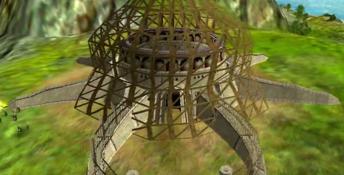

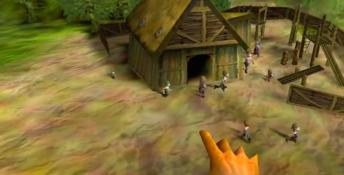
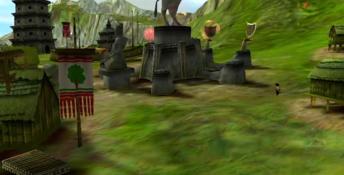
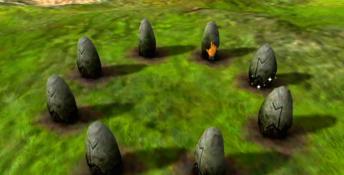
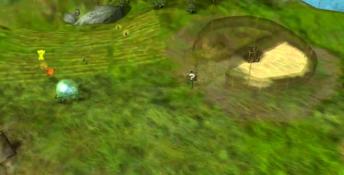

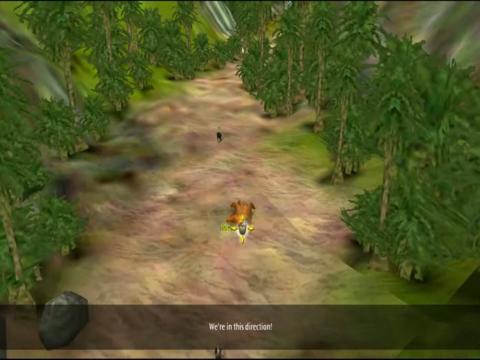
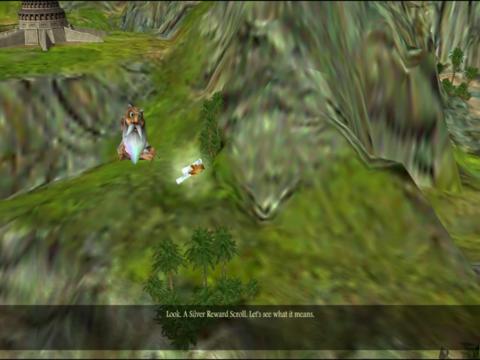





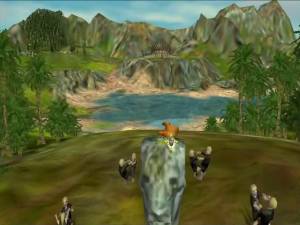

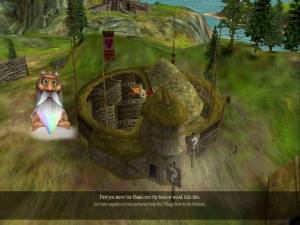
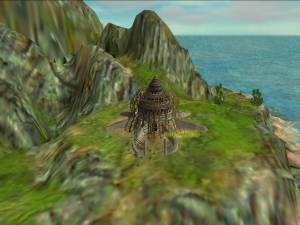



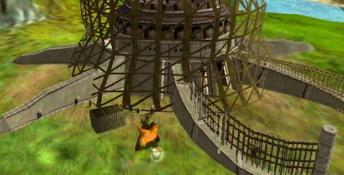

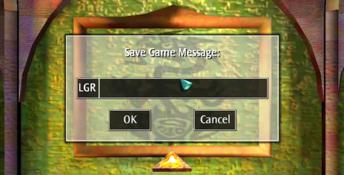

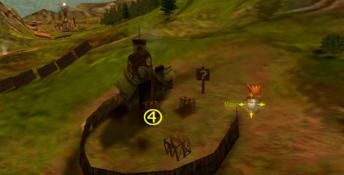
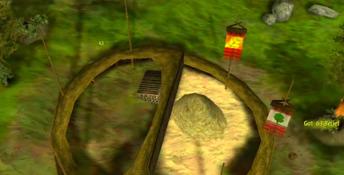
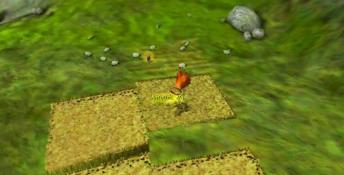
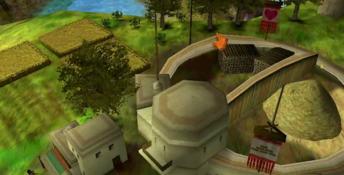
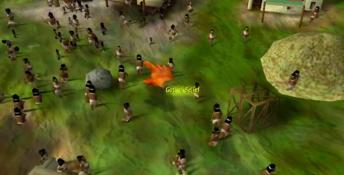
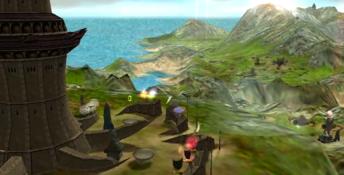
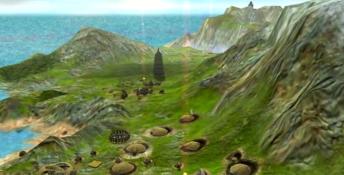

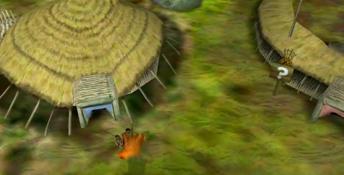
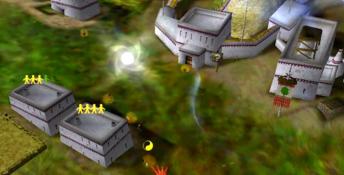
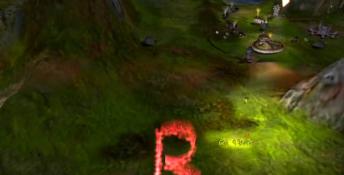
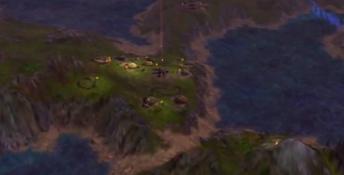
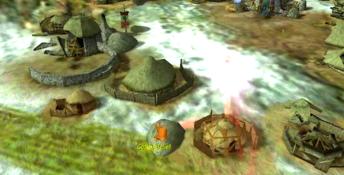

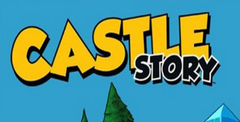 Castle Story
Castle Story
 Constructor
Constructor
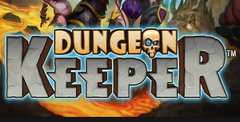 Dungeon Keeper
Dungeon Keeper
 Kerbal Space Program
Kerbal Space Program
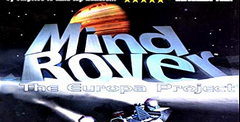 MindRover: The Europa Project
MindRover: The Europa Project
 Populous: The Beginning - Undiscovered Worlds
Populous: The Beginning - Undiscovered Worlds Sim Earth
Sim Earth
 Sub Culture
Sub Culture
 Zeus: Master of Olympus
Zeus: Master of Olympus